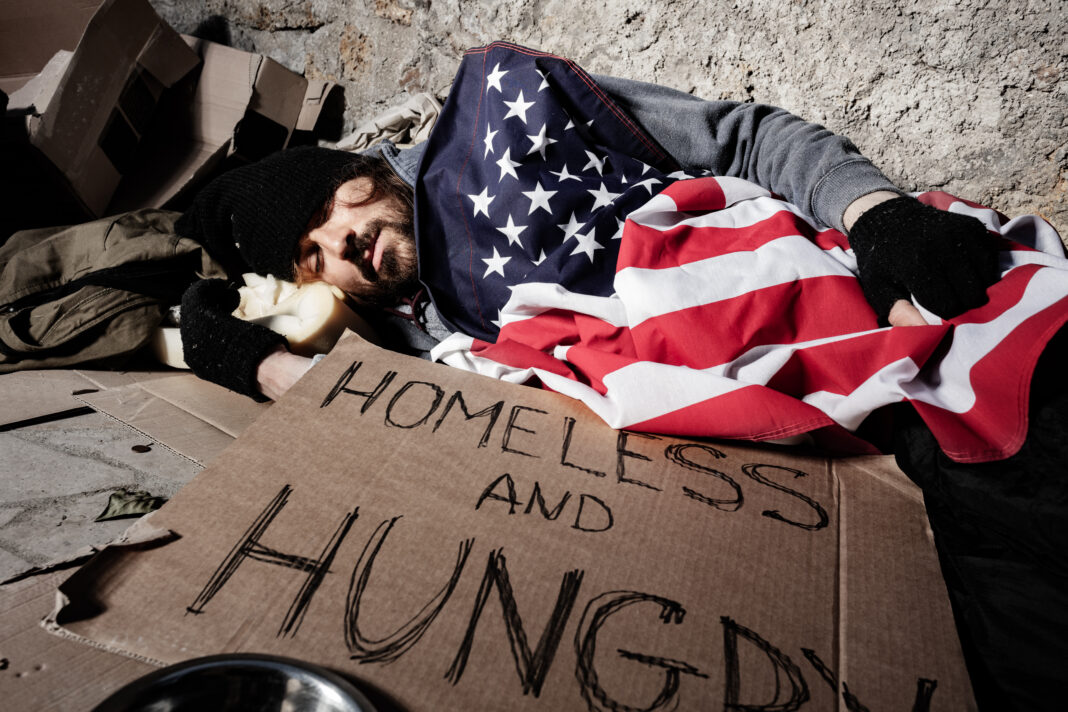Editor’s Note: The following article was originally published by Cynthia Griffith on Invisible People on October 7, 2024.
More Than 100,000 Seniors Are Unhoused on Any Given Night Thanks to Failing Safety Nets and a Lack of Housing Solutions
A collective of data suggests that millions of people endure homelessness in the United States each year. When taking a “snapshot” of that homelessness, surveyors determine at least 650,000 Americans appear visibly homeless on a given winter night. Of that 650,000, it is estimated that 100,000 are at or over age 55.
Who Are America’s Homeless Senior Citizens?
Growing old is no walk in the park for anyone. Aches and pains develop as part of the body’s natural deterioration process. This can include:
- Heightened forgetfulness
- Increased risk of slip-and-falls
- Frail bones
- Back pain
- Neck pain
- Arthritis
- Cognitive decline
- Hearing loss
- Vision problems
- Limited mobility and more
Geriatric conditions can truly take a toll, causing the quality of life to plummet for our seniors, many of whom already feel more isolated than ever, regardless of their housing status. That sentiment seems justified by the number of elderly individuals living on city streets and church steps.
Have We Abandoned Our Seniors? Signs of a Morally Flailing Society
Four decades ago, the 55-and-over community had a lot on their shoulders. But one thing they were rarely burdened with was the prospect of living on the streets. Sadly, that is no longer the case. The safety net that once was theirs has vanished.
Currently, senior citizens make up at least 20% of the unhoused population. They are also more likely to be unsheltered than other subgroups within the homeless community. This means they are more likely to be outside on the pavement than inside a homeless shelter or hotel.
In a telling piece on the subject of street homelessness, US News described a “graying homeless population” robbed of opportunities. The underlying causes of the crisis are complex, ranging from a lack of employment protections, unions, and pensions to the rise of the prison industrial complex and the deterioration of the modern family.
One thing that really stands out is the common vulnerability factor.
Research suggests that adults who became homeless for the first time toward the end of their lives had been living on the edge of poverty for quite some time. In many cases, they struggled with lifelong bouts of poverty but managed to narrowly pull through – to pull themselves up by their bootstraps, so to speak. Yet this was not enough.
Imagine the frustration of burning the candle at both ends for what feels like forever, only to lose your home in your old age. Imagine the person who worked two full-time, low-wage jobs for 45 years, having to sleep out under a lamppost at 65. Imagine entering and reentering the workforce under harsh conditions, back-to-back recessions, and a wave of ever-changing technology, only to find your pension does not suffice.
This is the reality our seniors are facing. Too many of them are facing it alone in the cold.
For the seniors who finally fall into homelessness, their fate was already years in the making, and all it took was one devastating, life-altering event to tip them over the edge. That event could range from the death of a spouse to the loss of a parent to a sudden diagnosis of a debilitating disease. Once they finally become homeless, their risk for many other calamities drastically increases.
Homeless Seniors are at an Increased Risk of Illness, Violence, Death, and Imprisonment
Because unhoused people over the age of 55 are more likely to be living on the streets, this puts them at an increased risk of premature death, violent altercations, and imprisonment. This is especially true in the wake of the Grants Pass decision when homeless criminalization is aggressively enforced.
“We’re certainly seeing an influx of seniors in crisis situations,” said Clinical Supervisor Bruce Lockett, a longtime crisis center and emergency room employee.
“A lot of unhoused seniors use the emergency room because they don’t have access to private physicians or they don’t have access to transportation to take them to these places for specialty care,” Lockett continued. “In many cases, they are already suffering from one or more illnesses and it’s very hard for them to get out to those other places.”
“They might rely on a bus or need a wheelchair to get around. The specialist might not be in the city or near their bus route,” he said. “So, they wind up in the emergency room or the crisis center because they couldn’t get to the podiatrist, or the throat specialist, or whatever type of specialized medical care they need.”
After making many futile trips to the emergency department, these abandoned seniors face the worst risk of all – the elevated risk of dying on the streets.
Did you know that people who become homeless for the first time after age 50 are 60% more likely to die while homeless than people who become homeless when they’re younger?
Tell Your Legislators to Protect Our Seniors by Making Housing a Human Right for All
People from the 55 and over community are already at an elevated risk of homelessness. It is tragic to witness many of them become homeless right at the time they are supposed to be getting the relief they earned through decades of hard work.
This doesn’t have to be their harsh reality, nor does it have to be yours. Tell your local legislators to make housing a human right to protect vulnerable populations like the very old and the very poor from needing to live outside in places unfit for human habitation.
El Tribuno del Pueblo brings you articles written by individuals or organizations, along with our own reporting. Bylined articles reflect the views of the authors. Unsigned articles reflect the views of the editorial board. Please credit the source when sharing: tribunodelpueblo.org. We’re all volunteers, no paid staff. Please donate at http://tribunodelpueblo.org to keep bringing you the voices of the movement because no human being is illegal.



